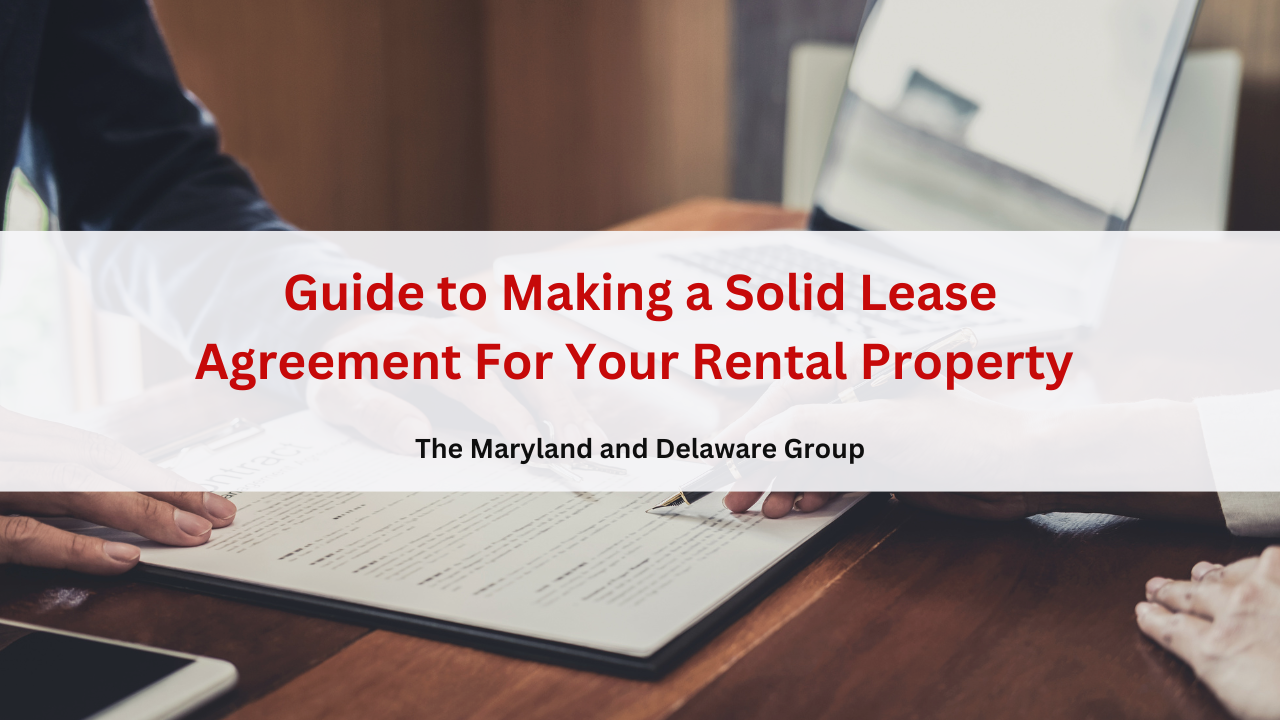
Have you ever considered how crucial a well-crafted lease agreement is to the success of your rental property? Owning a rental comes with numerous advantages, but it also entails significant responsibilities.
One of the most critical responsibilities being the creation of a clear, detailed, and legally sound lease.
Without it, you risk facing disputes, misunderstandings, and potential legal complications.
That’s why investing the time to develop a comprehensive lease is vital for every property owner.
To assist you in this important process, The Maryland and Delaware Group PM has created this guide to help you create a sound lease agreement. Keep reading to learn more!
Crafting an Effective Lease Agreement for Your Rental Property
Clearly Define the Basic Terms of the Lease
When renting out your property, the foundation of any lease agreement is clarity.
At the very beginning, it's important to state the basic terms of the lease in straightforward language. This includes:
- Full names of all tenants: Make sure that all adults who will live in the rental property are named on the lease.
- Property address: Clearly define the rental property’s location. If it’s part of a multi-unit building, include the unit number.
- Lease term: Specify the start date and end date of the lease, or if it's a month-to-month agreement, explain how it renews and how either party can terminate it.
- Rent amount: State the rent amount, due date (e.g., the 1st of each month), and acceptable payment methods (such as checks, direct bank transfers, or an online payment platform).

- Security deposit: Include the amount of the security deposit, when it must be paid, and the conditions for its return. Be sure to comply with state regulations regarding security deposits, as rules may vary.
Spell Out the Rights and Responsibilities of Each Party
A key element of any lease agreement is outlining what’s expected of both the landlord and the tenant.
To avoid future misunderstandings, make sure your lease clearly addresses the following:
Tenant Responsibilities
Clearly describe tenant duties, such as maintaining cleanliness, disposing of garbage properly, avoiding damage to the property, and adhering to any restrictions on alterations (like painting or installing fixtures).
Landlord Responsibilities
Make it clear that you, as the property owner, are responsible for making necessary repairs and ensuring the property is habitable.
Outline the process for tenants to report needed repairs and your expected response time.
Maintenance and Repairs
Be specific about which maintenance tasks tenants are responsible for and what you will cover as the landlord.
For example, tenants might be responsible for changing light bulbs and maintaining the lawn, while the landlord covers major repairs like fixing plumbing or electrical systems.
Utilities
Specify which utilities are covered in the rent and which are the tenant’s responsibility.
For example, tenants may be required to pay for electricity, gas, or water, while you might include trash removal in the rent.

Detail Policies on Rent Increases, Late Fees, and Lease Renewal
Many issues between landlords and tenants arise over rent payments, so it’s vital to have clear policies in place from the start.
Rent Increases
Explain under what circumstances and how much the rent can be increased, whether during the lease term or at renewal.
Be sure to comply with state or local laws regarding how much notice you must give before a rent increase.
Late Fees
Include a clear policy on late fees for rent.
Specify when rent is considered late (e.g., after the 5th of the month) and how much the late fee will be. If there’s a grace period, state how long it is.
Lease Renewal
Address how the lease will be renewed, including whether it automatically converts to a month-to-month lease or if the tenant must sign a new agreement.
Clearly define how much notice either party must give to renew or terminate the lease (commonly 30 or 60 days).
Include Rules About Property Use and Tenant Behavior
A solid lease agreement should include clear guidelines about how the rental property can be used and what behavior is expected of the tenants.
These rules help protect your property and maintain a good relationship with the neighbors. Some common issues to cover include:
Subletting
Specify whether subletting is allowed, and if it is, require that tenants get your approval before subletting the unit.
Pets
Include a pet policy that clearly states whether pets are allowed. If they are, define any pet fees, deposits, and restrictions (such as breed, size, or number of pets).

Noise and Nuisance
Establish rules around noise levels and behavior that may disturb neighbors, especially in multi-unit buildings. Many landlords include quiet hours in the lease.
Guest Policy
Define how long guests can stay without being added to the lease.
This prevents situations where an unofficial tenant starts living on the property without your knowledge.
Legal Protections and Eviction Procedures
Lastly, your lease agreement should include important legal clauses that protect both you and your tenant.
These are critical in case disputes arise, or in the unfortunate event of needing to pursue eviction. These provisions include:
Termination and Eviction Procedures
Outline the reasons that can lead to eviction, such as non-payment of rent, violation of lease terms, or illegal activities.
Also, explain the steps you will take to evict a tenant, including the amount of notice you will give before filing for eviction. Make sure this aligns with local eviction laws.
Inspection and Entry Policies
Include terms about when and how you can enter the rental property, such as for repairs or inspections.
Local laws usually require you to give a certain amount of notice, often 24 hours.
Legal Disclosures
Make sure your lease includes any legally required disclosures.
This could include information about lead-based paint, mold, or asbestos, depending on the age and condition of the property.
Some areas also require disclosures about local flood zones or natural disaster risks.
Bottom Line
A well-written lease agreement is essential for creating a smooth, professional relationship with your tenants.
By clearly defining terms and responsibilities, you can prevent misunderstandings, protect your property, and enhance your rental experience.
Comprehensive lease agreements address everything from rent payments and maintenance to legal protections and eviction procedures, ensuring both parties understand the rules from the start.
The Maryland and Delaware Group PM is here to assist landlords with all aspects of property management, including drafting solid lease agreements that comply with local laws.
Contact us today to discover how we can make your leasing process seamless and stress-free!


